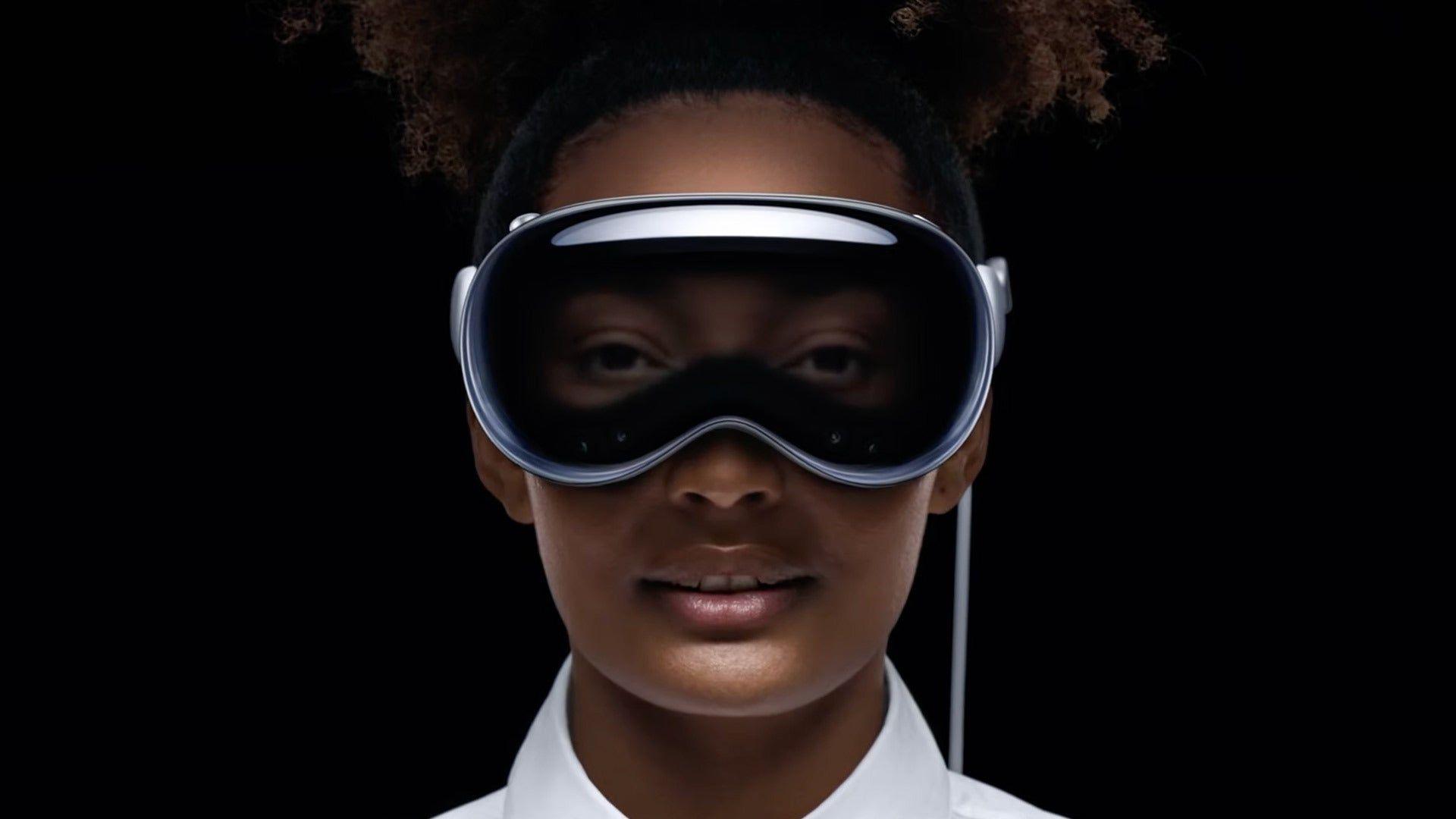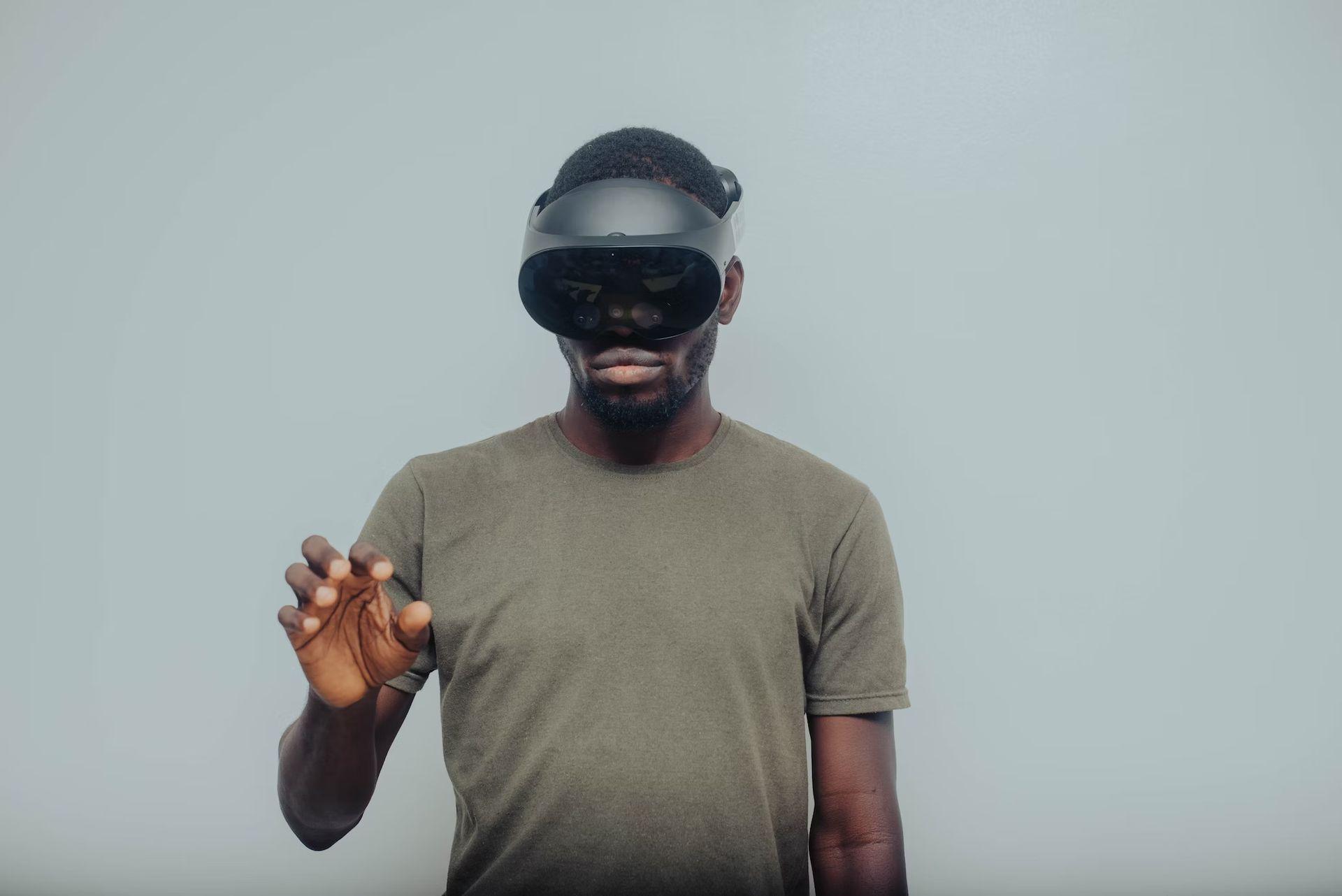Spatial computing represents a technological advancement where computers seamlessly integrate with the physical environment. While Apple isn’t pioneering this field, it anticipates that this will be a significant leap forward in computing. The company is staking its claim in this domain with the launch of its new AR/VR headset, the Apple Vision Pro. This approach aligns with the growing interest in what is spatial computing and its potential impact on future technology.
Meta and other tech giants are leading the way with the release of advanced headsets, and Apple is joining this trend with its Vision Pro headsets. However, Apple is keen to differentiate its product by branding it with the term “spatial reality” rather than the usual descriptors.

Describing the Vision Pro, priced from $3,500, is a challenge, as its groundbreaking technology is best experienced firsthand. Those who have tried the Vision Pro often struggle to find the right words to convey its impact.
Apple is actively promoting “spatial computing” as the go-to term for this experience. This terminology is prominently featured on Apple’s website and is the recommended descriptor for developers creating apps for the Vision Pro, as outlined in Apple’s online guidelines.
Don’t describe your app experience as augmented reality (AR), virtual reality (VR), extended reality (XR), or mixed reality (MR).
-Apple
What is spatial computing?
Spatial computing involves the integration of digital processes with activities involving humans, machines, objects, and their environments. This technology is changing the way industrial companies enhance operations for frontline workers in various settings such as factories and warehouses, offering a digitally enhanced, three-dimensional context for enterprise activities and interactions.
How does spatial computing work?
Spatial computing merges the real and virtual realms effortlessly. Devices like the Apple Vision Pro, Microsoft HoloLens, Meta Quest Pro, and Magic Leap epitomize this technology. These headsets not only display the physical world but also incorporate digital objects into it, creating a three-dimensional effect. For instance, one can virtually place furniture in a room to preview its appearance before purchase, or workers can project technical manuals directly onto the machinery they are working on.
These devices employ a range of technologies to blend digital and physical realities. Computer vision, for example, interprets data from cameras and sensors, capturing details about the environment, including the positioning and movement of objects. Sensor fusion integrates data from various sources, like cameras and LiDARs, to generate a detailed and comprehensive environmental view. Spatial mapping then constructs a 3D model of the surroundings, enhancing the accuracy of digital content placement and interaction.

A significant benefit of this technology is its depth perception capability, which enables realistic interactions with virtual objects. These objects can be positioned, moved, or concealed behind physical objects, mirroring interactions in the real world, thus making the experience more natural and intuitive.
Devices utilizing spatial computing are equipped with features that facilitate interaction with virtual objects. For instance, eye-tracking technology allows the device to follow your gaze, while handheld controllers and motion sensors enable manipulation of these virtual elements. Take the Apple Vision Pro, equipped with a sophisticated eye-tracking system and sensors for hand-gesture detection, allowing users to activate or move items with simple gestures like pinching fingers or flicking wrists.
These devices also often incorporate speech recognition to accommodate voice commands, particularly useful in environments like manufacturing where hand gestures may not be feasible. Devices such as the Vision Pro, HoloLens, and Magic Leap all support this functionality.

Spatial computing is closely linked with augmented reality (AR) and virtual reality (VR). AR involves superimposing digital content onto the real world, often through smartphones or smart glasses, enhancing the user’s environmental perception without embedding digital content in 3D space or offering depth perception. VR, in contrast, creates an entirely immersive digital experience, substituting the user’s physical environment. Mixed reality (MR) merges elements of both AR and VR, offering a more integrated digital and physical experience.
What are the examples of spatial computing?
Spatial computing is poised to transform various sectors by enabling previously unattainable experiences and applications. It finds relevance in several fields, such as:
Architecture and design aspects
Spatial computing allows architects to craft, visualize, and adjust designs in a real-world context without needing physical models. This not only cuts down time and costs but also facilitates more dynamic design processes. Designers can leverage this technology to develop virtual prototypes of products, assessing their functionality and ergonomics in diverse physical environments.

Education and training applications
For education, spatial computing offers an interactive and engaging learning experience, bolstering both knowledge retention and skill development. Medical students, for example, can practice surgical techniques in a virtual setting that replicates real-life conditions. Similarly, in science and engineering disciplines, students can use this technology to construct and evaluate virtual prototypes or conduct experiments.
Gaming technology
Spatial computing has revolutionized gaming and entertainment, offering immersive experiences that allow natural and intuitive interactions with virtual objects and characters. Instead of traditional controls like keyboards or joysticks, players can use hand gestures or eye movements to navigate avatars and interact with game elements.
The technology extends to reimagining real-world events; for instance, with devices like the Apple Vision Pro, one could experience an NBA game as if seated courtside. Additionally, spatial computing enables recording and reliving memories in a three-dimensional format, adding a new dimension to personal experiences.

Better healthcare
Spatial computing is set to revolutionize healthcare by offering innovative ways to diagnose, treat, and monitor patients. Doctors, for instance, could use spatial computing to superimpose virtual screens and diagnostic data onto the real world, enhancing their decision-making capabilities.
During surgeries, surgeons might view a patient’s medical imaging scans through headsets, thereby enriching their operational precision. Moreover, this technology could aid patients with physical or cognitive disabilities, providing them with custom virtual assistants or rehabilitation exercises designed for their specific needs.
Beyond these areas, spatial computing has potential applications in retail, manufacturing, and transportation. In manufacturing, for example, this technology could be used to enhance assembly lines with virtual aids and information, optimizing production processes.
The potential of spatial computing
Despite its promising applications, spatial computing has experienced varied success. A major hurdle is the cost of hardware; top-tier spatial computing devices are expensive, limiting their accessibility and thus their impact in the consumer market. To date, their success has been confined mostly to niche enterprise applications where the productivity gains justify the investment.
Other challenges include the weight and comfort of the headsets, which can cause fatigue and motion sickness, particularly during prolonged use. Additionally, the resolution of these devices and battery life, which often lasts only a few hours, are concerns that need addressing. However, advancements are being made in these areas, and as the industry evolves and becomes more competitive, the costs of sensors, displays, and other hardware components are expected to decrease.

As for Apple’s foray into spatial computing with the Vision Pro, it remains to be seen whether it will be a pivotal or unsuccessful endeavor. Apple has a history of pioneering and setting industry standards in various technology sectors. Though currently expensive, the Vision Pro might catalyze the development of innovative applications and devices in the spatial computing field, similar to the impact of Apple’s previous groundbreaking products like the mouse, the graphical user interface, the iPod, and the iPhone.
FAQs
What is the basic principle of spatial computing?
Spatial computing is characterized by interactions occurring within real three-dimensional spaces rather than on a flat 2D screen. This technology leverages sensors that track movements in these spaces, seamlessly integrating both virtual/digital elements and physical, real-world elements.
Is spatial computing the same as IoT?
While spatial computing and IoT share some commonalities, they are not the same. Spatial computing enhances the vision of IoT for industrial companies by adding a layer of physical interaction with the data gathered by IoT sensors. IoT has enabled industrial environments to generate and utilize vast data sets for maximizing revenue, reducing costs, and improving quality. However, this technology provides a more immersive and interactive dimension to these operations.
What is the difference between spatial computing and metaverse?
The metaverse represents the ultimate experience or product, where spatial computing is a technology that enables some of these experiences. However, not all metaverse experiences use this technology, and not every experience enabled by spatial computing constitutes a metaverse experience.
Is spatial computing the same as XR?
XR, encompassing augmented reality (overlaying digital content into physical spaces) and virtual reality (fully immersive virtual environments), is part of the spatial computing spectrum. However, this technology is not limited to XR technologies; it encompasses a broader range of technologies and applications.
How big is the spatial computing market?
As of 2023, the spatial computing market was valued at approximately USD 97.9 billion. According to marketsandmarkets.com, it is projected to grow at a compound annual growth rate (CAGR) of 23.4%, potentially reaching around USD 280.5 billion by 2028, according to marketsandmarkets.com.
Where did the term spatial computing come from?
The term “spatial computing” was coined in 2003 by Simon Greenwold, a graduate researcher at MIT. His early contributions to the field included developing early augmented reality prototypes, input devices for computer control through real-world actions, and an affordable 3D scanner.
Featured image credit: Kerem Gülen/DALL-E 3






